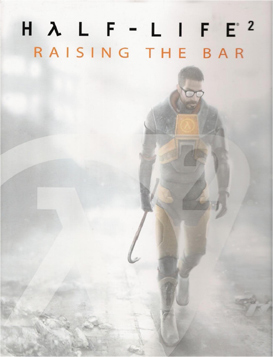Half-Life: Raising the Bar
This nearly three-hundred-page book describes the history of Valve, from the very first days to the release of Half-Life 2. It contains a lot of concept art, illustrations, interviews, interesting notes and stories. It should be interesting to everyone, not even fans of computer games.
The translation is made by members of the Nasha-Life community.

')
Link to the pdf-version of the translation of the book (76 mb)
The translation is made by members of the Nasha-Life community.

')
Creating the world from the very beginning is not an easy task, but it was, in a sense, the challenge of Gabe Newell and Mike Harrington. Retired developers Microsoft, Gabe and Mike shared with each other their ideas about the future of the gaming industry, but none of them could have imagined that their dreams would come true so quickly.
From the very beginning, they were brought together by the fact that both of them were aware of the entire riskiness of this undertaking and, nevertheless, developed a common business plan. The simplest possible solution was to license the reliable Quake engine from the Quake and Doom developers — Id Software; it was, without exaggeration, the most reasonable solution for continuing quiet, relaxed work in a small Seattle suburb of Kirkland in Washington. It was a great place to start creating. Create what has become essentially a first-class first-person shooter with a simple, intuitive interface and lots of monster fights.
The only thing that didn’t inspire a clear sense of security and stability was the need to find the first developers from the Quake mod-maker community: young programmers and level designers who spent their days delivering pizza, clearing the ground from monsters in computer clubs at night, learning along and across all the board cards. From the very beginning, Valve really liked the essence of the gaming community, and they supported the creative attitude of people who loved games so much that they could not but make them themselves.
Getting to work, Valve immediately formed two teams working on different projects. The first project, called Quiver, was to become a first-person shooter, like Doom, with an emphasis on alien monsters, weapons and adrenaline. Another project, called Prospero, was supposed to be a grim literary game built on sources ranging from Myst to Borges. But when Half-Life reached critical mass, he gradually began to draw in every member of the team, the scenes began to be borrowed from Prospero, thereby creating a big emphasis on plot and atmosphere in Half-Life. In the meantime, it was already clear to Valve developers that Half-Life could not become a good enough game if the developers were not given time to rethink and redo it from the very beginning. In late 1997, Gabe and Mike turn the hourglass upside down, giving the team an extra year to develop Half-Life and put it in order. And this extra time has changed the world.
Link to the pdf-version of the translation of the book (76 mb)
Source: https://habr.com/ru/post/43163/
All Articles